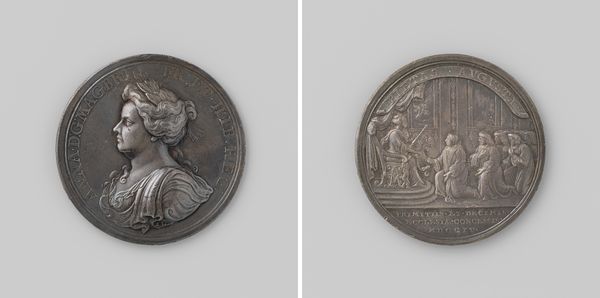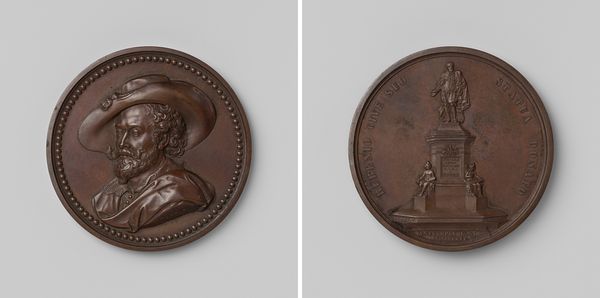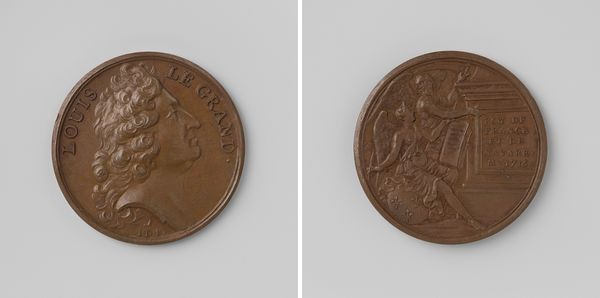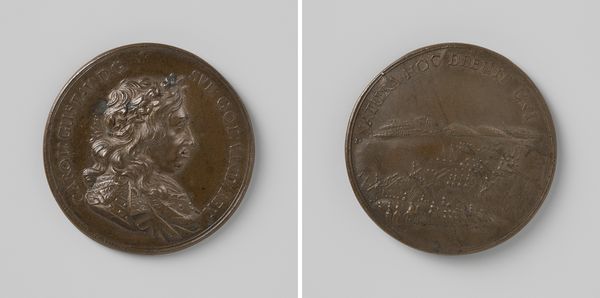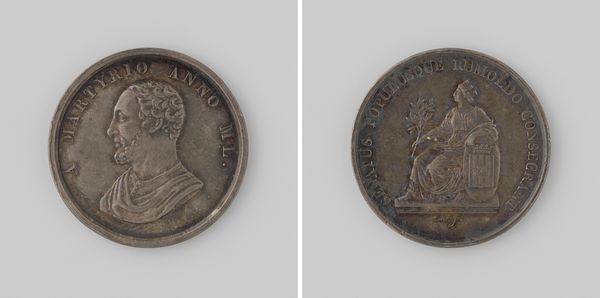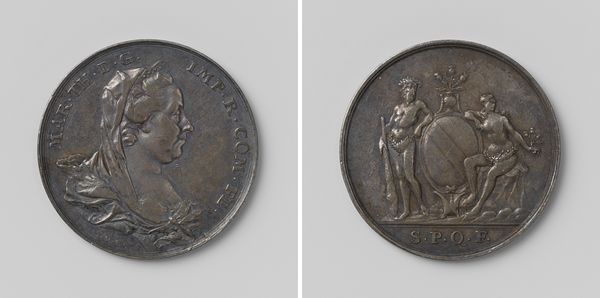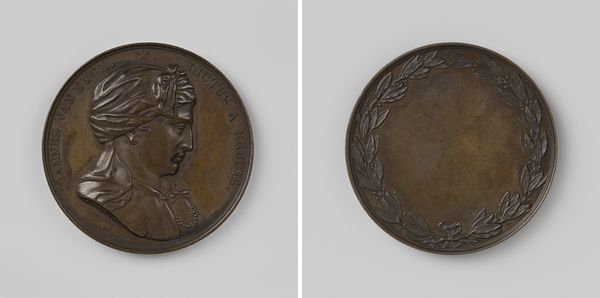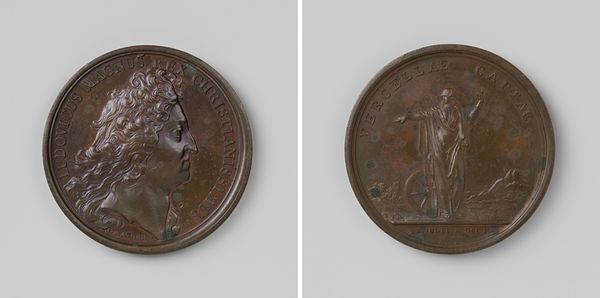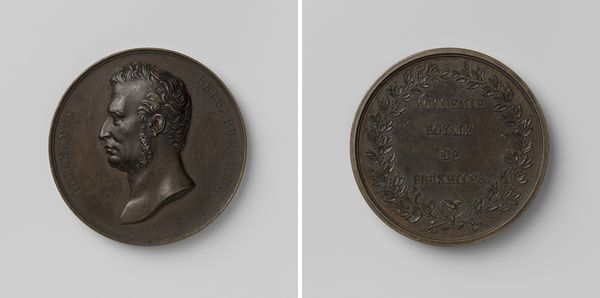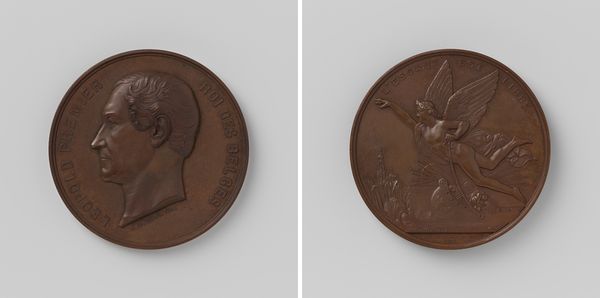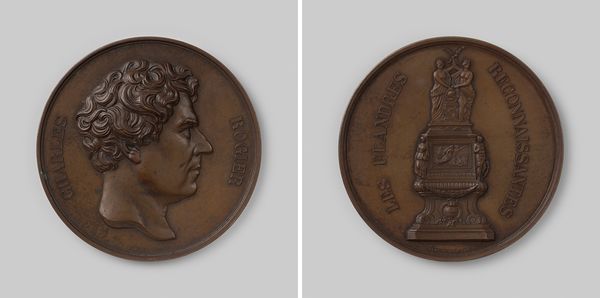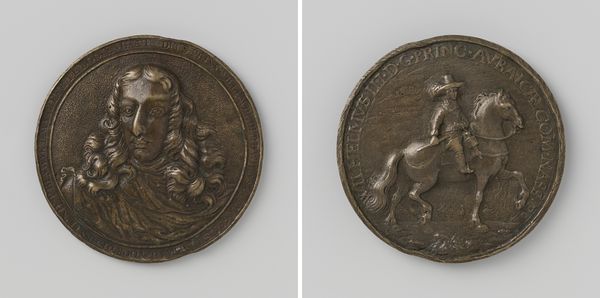
Inhuldiging van Willem I Frederik als koning der Nederlanden te Brussel 1815
0:00
0:00
metal, relief, bronze, sculpture
#
portrait
#
neoclacissism
#
metal
#
sculpture
#
relief
#
bronze
#
sculpture
#
history-painting
Dimensions: diameter 4.6 cm, weight 42.32 gr
Copyright: Rijks Museum: Open Domain
Curator: Looking at this bronze relief by Joseph-Pierre Braemt, cast in 1815, commemorating the "Inauguration of Willem I Frederick as King of the Netherlands in Brussels"... it strikes me as an object heavy with historical meaning, quite literally. Editor: Indeed. My initial reaction is how much the material itself communicates. The solemn weight of the bronze seems fitting for the momentous event it portrays: a king's coronation. It has the appearance of an artifact unearthed from some classical civilization, due to its dark patina and austere lines. Curator: Absolutely. The choice of bronze and the relief style situate it firmly within a Neoclassical aesthetic. The image, while documenting a very specific historical event, clearly alludes to older imperial traditions and Roman virtue. The King's profile, isn’t it reminiscent of an emperor's? Editor: Precisely. Observe how Willem is depicted on one side of the coin, a classical profile surrounded by Latin text. On the opposite face, he is presented with the crown, symbols loaded with import and authority. One wonders what that object in front of him is meant to evoke. Curator: Likely the altar of oath, representing law, nation and tradition. It is interesting to consider how the inauguration ceremony itself—the gestures, the location, the key participants—was staged for maximum symbolic impact. Note the deliberate act of invoking rituals of legitimation that trace all the way to the antique, meant to consolidate the new regime's image, not just power. Editor: Yes, power requires symbols, and symbols need to be anchored in the past to resonate in the present. And who is the figure crowning Willem I? The feminine figure suggests perhaps an allegory of Belgium? A national personification granting authority? Curator: More than likely. Considering Brussels was where this symbolic event was located, her presence is testament to the union, however uneasy, being forged between the Netherlands and Belgium. She’s the personification of this new political entity, but notice how passive her role is. Editor: In a way, her subservient stature reflects that of the soon-to-be Belgium. But thanks to such objects and events, memory and symbols, her position and destiny have been enshrined forever, quite literally here in a bronze relief. Curator: Precisely, a carefully sculpted artefact of power. Editor: The artwork succeeds, it allows us to imagine ourselves back in the historic moment.
Comments
No comments
Be the first to comment and join the conversation on the ultimate creative platform.
